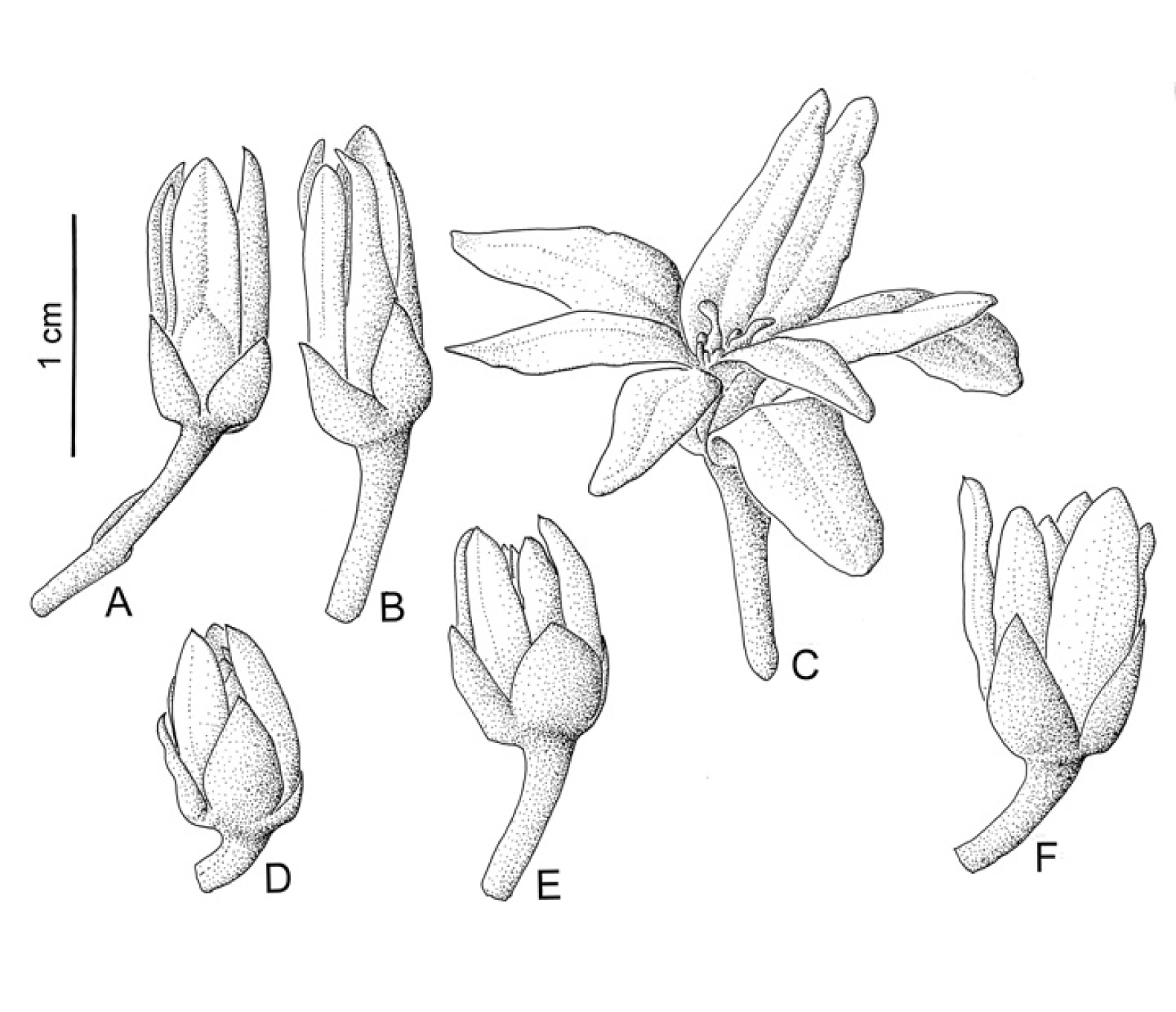Notes on the floral anatomy of Deeringothamnus Small (Annonaceae): cortical vascular systems in a chaotic pattern
Abstract
Floral anatomy of Deeringothamnus Small, an endemic and endangered annonaceous genus from Florida comprising 2 species, was studied. It is mainly distinguished by missing any sclerenchyma at anthesis – apart from anthers – and by a chaotic vasculature exhibiting a partial perianth-stamen cortical vascular system, appearing as an over-evolution of the pattern previously described in the neighbouring Asimina and other paracarpous and pseudosyncarpous genera. Such a pattern is amazingly similar to that previously recognized in the most basal annonaceaous genera, as e.g. Ambavia, and might be considered as a reversion to an ancestral state. These alterations toward decrease are related to the receptacle flatness and lack of pollination chamber, and seem parallel with the dwarf habit of this genus.
References
Deroin T. 1988. Aspects anatomiques et biologiques de la fleur des Annonacées. Unpublished thesis 590. Paris 11 University, Orsay.
Deroin T. 1997. Comparative anatomy of floral pedicels in Annonaceae and Magnoliaceae: bringing out some evolutive trends. Scripta Botanica Belgica 15: 49.
Deroin T. 2000. Floral anatomy of Sanrafaelia Verdc. and its evolutive significance. Annonaceae Newsletters (Utrecht) 13: 36–40.
Deroin T., Couvreur T.L.P. 2008. Floral anatomy. In: Couvreur T.L.P. Revealing the secrets of African Annonaceae. Systematics, evolution and biogeography of the syncarpous genera Isolona and Monodora. PhD thesis Wageningen University, The Netherlands (ISBN 978-90-8504-924-1): 120–124. Wöhrmann Print Service, CPI Group, Zutphen.
Deroin T., Le Thomas A. 1989. Sur la systématique et les potentialités évolutives des Annonacées: cas d’Ambavia gerrardii (Baillon) Le Thomas, espèce endémique de Madagascar. Comptes Rendus de l’Académie des Sciences, Paris, t. 309, Série III: 647–652.
Gerlach D. 1984. Botanische Mikrotechnik. Thieme, Stuttgart.
Kral R. 1960. A revision of Asimina and Deeringothamnus. Brittonia 12: 233–278.
Mercer E., Griffin B., Steele J., Goodrich K.R., Bush C.M. 2016. Phylogenetic relationships of Asimina and Deeringothamnus (Annonaceae) based on morphology, floral scent chemistry, and Inter-Simple Sequence Repeat data. J. Torrey Bot. Soc. 143: 58–68.
Norman E.M. 2003. Reproductive biology of Deeringothamnus rugelii and D. pulchellus (Annonaceae). Taxon 52: 547–555.
Norman E.M. 2007. The “False Pawpaws”. History, biology and conservation of Deeringothamnus. Palmetto (Quaterly J. Florida Native Pl. Soc.) 24: 4–7, 15.
Norman E.M., Rice K., Cochran S. 1992. Reproductive biology of Asimina parviflora (Annonaceae). Bull. Torrey Bot. Club 119: 1–5.
Smith G.H. 1928. Vascular anatomy of ranalian flowers II. Ranunculaceae (cont.), Menispermaceae, Calycanthaceae, Annonaceae. Bot. Gaz. (Crawfordsville) 85: 170–177.
van Heusden E.C.H. 1992. Flowers of Annonaceae: morphology, classification and evolution. Blumea Suppl. 7: 1–218.
Ward D.B. 2001. New combinations in the Florida flora. Novon 11: 360–365.


This work is licensed under a Creative Commons Attribution-NonCommercial-NoDerivatives 4.0 International License.
The journal is licensed by Creative Commons under BY-NC-ND license. You are welcome and free to share (copy and redistribute the material in any medium or format) all the published materials. You may not use the material for commercial purposes. You must give appropriate credit to all published materials.
The journal allow the author(s) to hold the copyrights and to retain publishing rights without any restrictions. This is also indicated at the bottom of each article.





